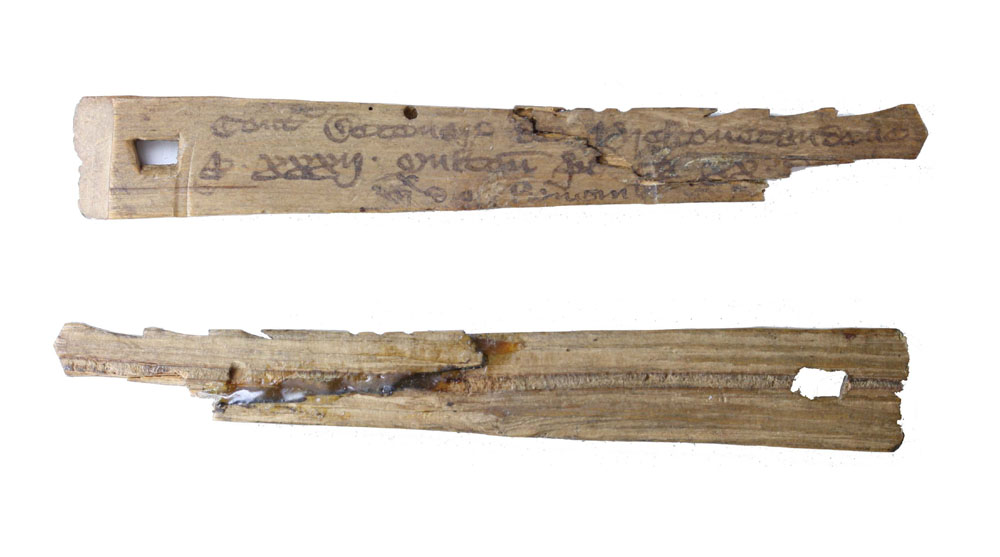Tally sticks are our oldest known mathematical artefacts. The oldest of all, the “Lebombo Bone” from South Africa, is more than forty thousand years old.1 The principle behind the tally stick is simple: take a stick, carve a notch or a mark in it to add 1 to some ongoing count, and you have a portable, permanent record of that cumulative value.2

But later, and in Britain especially, tally sticks took on another use: they were used to record debts. A stick of willow was inscribed with the name of the debtor and scored to record the amount. It was then split along its length, so that the two halves matched only each other. The half with the name of the debtor was kept by the creditor, and the other half was kept by the debtor. The “stock” — the part that identified the debtor and amount of their debt — became a form of currency, which could be exchanged in lieu of money. The new owner of the stock could then, at any time, demand settlement of the debt or trade it on to yet another owner.3
The government treasury, or Exchequer, used tally sticks to record debts owed to the state until as late as 1826, when the practice was replaced by written ledgers. Eight years later, when the last two cartloads of stocks were to be burned, janitors at the Houses of Parliament set about doing so in a furnace in the building’s basement — leading to a fire that very nearly destroyed the entire parliamentary estate.4
From recording prehistoric counts to managing the finances of the British state and immolating its parliament, the simple tally stick lived an eventful life.
- 1.
-
D’Errico, Francesco, Lucinda Backwell, Paola Villa, Ilaria Degano, Jeannette J. Lucejko, Marion K. Bamford, Thomas F. G. Higham, Maria Perla Colombini, and Peter B. Beaumont. “Early Evidence of San Material Culture Represented by Organic Artifacts from Border Cave, South Africa”. Proceedings of the National Academy of Sciences 109, no. 33 (August 14, 2012): 13214-13219. https://doi.org/10.1073/PNAS.1204213109.
- 2.
-
Menninger, Karl. Number words and number symbols: a cultural history of numbers. Cambridge: MIT Press, 1969.
- 3.
-
Harford, Tim. “What tally sticks tell us about how money works”. BBC News, sec. Business.
- 4.
-
“Tally Sticks”. UK Parliament. Accessed December 1, 2023.
Comment posted by Nancy Gilmartin on
Thank you!
Comment posted by Keith Houston on
Not at all! Check in again tomorrow for the next entry.
Comment posted by Steve Minniear on
Tally Ho Ho Ho! (Sorry, I couldn’t resist the urge.)
Comment posted by Keith Houston on
Ha! Very good.